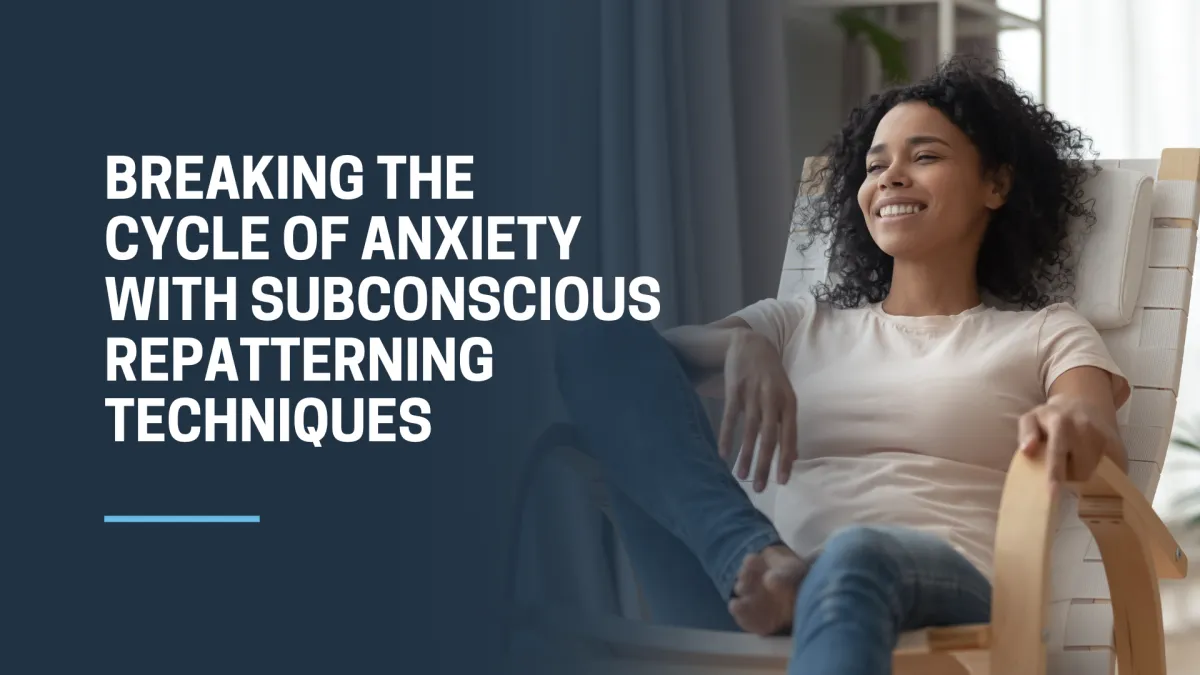
Breaking the Cycle of Anxiety with Subconscious Repatterning Techniques
Anxiety can be relentless. It loops through your mind, distorting reality, keeping your body tense, and making peace feel out of reach. While traditional methods like talk therapy and medication offer support, they often overlook one of the most powerful tools we have: the subconscious mind.
Through subconscious repatterning, you can identify and shift the deep mental scripts that drive your anxious responses—offering lasting transformation from the inside out.
How Subconscious Patterns Shape Anxiety Responses
Your brain is built for survival. At its core, the subconscious mind is designed to protect you by scanning for threats—often without your awareness. Over time, however, these protective instincts can become miscalibrated due to past trauma, stress, or repeated negative experiences.
Here’s how subconscious patterns fuel anxiety:
Repetitive thoughts like “I’m not safe” or “I’ll fail” operate automatically.
Triggers activate the fight-or-flight response, even when no danger exists.
Emotional memories override logic, keeping you stuck in hypervigilance.
Until those subconscious patterns are reprogrammed, your brain will keep defaulting to anxiety.
Techniques to Rewire the Brain Using SRI-Based Methods
Subconscious Repatterning and Integration (SRI) is a methodology designed to shift your mental and emotional defaults. It works by accessing the “other 90%” of the mind—beyond conscious awareness—and gently redirecting it toward safety and stability.
Here are three powerful techniques based on SRI principles:
State Setting
Your subconscious responds to emotions more than words. Instead of saying “I want to feel calm,” generate the feeling of being calm. Imagine being confident, grounded, and at ease. Feel it in your body. This tells your subconscious, “This is the new goal state.”
Thought Interrupts
Interrupt anxiety loops by catching automatic thoughts and replacing them with reality-based alternatives. For example, “I always mess up” becomes, “I’m learning to handle things better each day.” Pair this with breathwork to reinforce the new thought emotionally.
Micro Shifts and Repetition
The brain loves consistency. Practicing short, 2–5 minute repatterning rituals daily can create significant long-term change. Repetition signals to the brain: “This new pattern is safe. Let’s keep it.”
Guided Visualization Exercises to Shift Anxious Thought Loops
Visualization—done correctly—helps reprogram the subconscious by building emotional familiarity with calmness and confidence.
Try this simple guided exercise:
Close your eyes and breathe deeply.
Recall a time you felt capable or peaceful.
Feel that sensation fully—expand it through your body.
Anchor the feeling with a phrase like: “This is who I am becoming.”
Repeat daily, especially before sleep when the subconscious is most impressionable.
Visualization works best when paired with physical calmness (like after a walk or bath). For more research-backed practices, explore Greater Good Magazine from UC Berkeley which shares science-based tools for emotional well-being.
You’re Not Broken—You’re Just Wired for Protection
If anxiety has kept you stuck in fear, it’s not because you’re weak or broken—it’s because your subconscious is doing its job a little too well. With subconscious repatterning, you can teach your brain a new way to respond to life: from calm, not chaos.
The good news? You don’t have to do it alone.
Ready to Start Repatterning Your Anxiety for Good?
Book your consultation today and take the first step toward lasting peace.
👉 Click here to schedule your consultation
